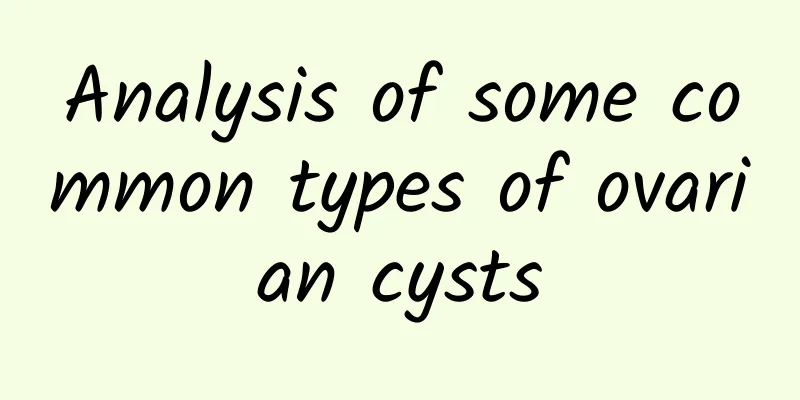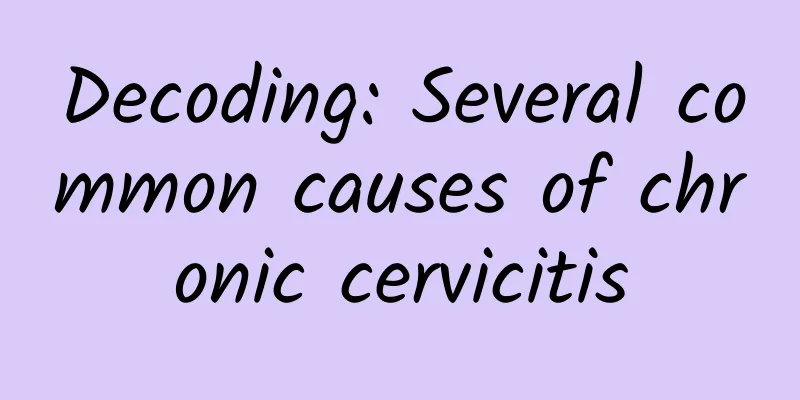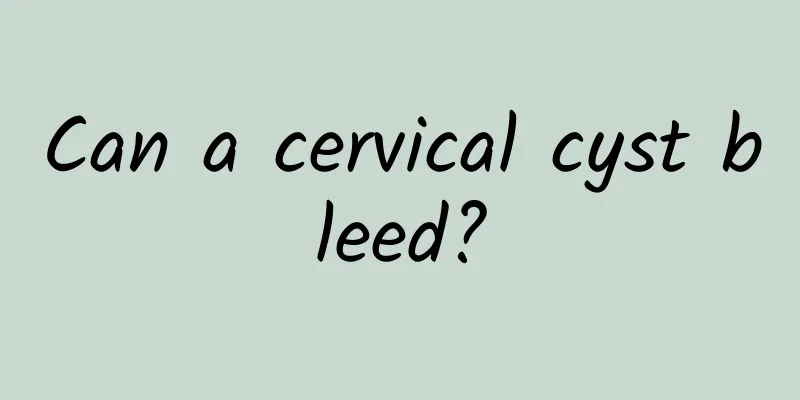Analysis of some common types of ovarian cysts

|
Ovarian cysts are a type of tumor that can occur at any age. Ovarian cysts occur mainly in women aged 20 to 50, causing great harm to women's health. Let's talk about the types of ovarian cysts. There are several main types of ovarian cysts : 1. Serous epithelial cysts and mucinous epithelial cysts: After three months of observation, the cysts that still exist may be epithelial ovarian cysts rather than functional cysts. This is because the serous cells and mucinous cells with secretory functions are buried in the ovaries after ovulation, and they continuously secrete fluid to form cysts. This type of cyst will not disappear and needs to be removed surgically. 2. Chocolate cyst (endometrioma): refers to endometriosis growing in the ovaries, forming a large amount of sticky coffee-colored chocolate-like liquid in the ovaries. Because endometrioma will grow larger over time, it will gradually erode normal tissues and cause irreversible damage to ovarian tissues. After evaluating its severity, surgery may be required. 1. Functional cyst: This is the most common cyst. It occurs in women of childbearing age during the ovulation cycle. Abnormal amounts of fluid accumulate in the follicles or corpus luteum, forming follicular cysts or corpus luteum cysts. This functional cyst can sometimes be very large, but regardless of whether medication is used or not, it usually disappears on its own within three months. 3. Hemorrhagic cysts: Sometimes follicular cysts and corpus luteum cysts grow too fast, causing the ovarian tissue to tear and bleed. The blood accumulates in the ovary because there is no outlet, which is called a hemorrhagic cyst. This type of cyst usually disappears on its own, but it takes a long time. If the physical discomfort is more obvious, you can take medicine to alleviate the symptoms. Only in a few cases, when the patient presents more serious symptoms, surgical removal is required. 4. Teratoma: This is a very special cyst. It may be a problem with cell differentiation during the embryonic period, and it takes a long time to show up. It will form a collection of hair, teeth, and some oils in the ovary. Since the teratoma itself will not disappear on its own and may continue to grow, and there is a 15% chance of causing ovarian torsion, it is best to remove it early. Generally speaking, the rate of malignancy is less than one in a thousand. 5. Ovarian cancer: The chance of developing ovarian cancer is quite low, but because it is located in the pelvic cavity, it is not easy to detect early. The above is an introduction to "Types of Ovarian Cysts" for reference only. There are many types of ovarian cysts. If you have similar symptoms, you should receive diagnosis and treatment as soon as possible. If you still have doubts about the types of ovarian cysts, you may wish to consult our online experts online. |
<<: The examination of cervical hypertrophy should not be ignored
>>: The presence of ascites is often one of the causes of ovarian cysts in women
Recommend
Can’t control your eating? 11 foods to help reduce appetite
Looking at the skinny female stars on TV and the ...
How to take care of your body after miscarriage? Pay attention to these 5 points
After a miscarriage, women must combine work and ...
Will uterine fibroid surgery involve hysterectomy? What are the sequelae of hysterectomy?
Uterine fibroids are one of the most common benig...
What causes bilateral ovarian cysts? How to treat them?
What causes bilateral ovarian cysts? How to treat...
Experts explain physical treatment methods for cervical erosion
Among the various methods of treating cervical er...
Do you know the symptoms of malignant uterine fibroids?
Have you ever heard of uterine fibroids? How much...
The rising prices make it hard to afford! Bring your own lunch and eat cheaper food instead
Are rising prices really unbearable? According to...
Uterine bleeding is usually a manifestation of uterine fibroids.
Uterine bleeding is usually a manifestation of ut...
Repeatedly failed at losing weight? First, what kind of body type do you have? Understand the three major body types and eat right to lose weight
Repeatedly failed at losing weight? First, what k...
Will cervical erosion cause back pain? It is a normal physiological phenomenon
Cervical erosion is a normal physiological phenom...
My period hasn't come for two months, and sometimes I have lower abdominal pain and back pain. What do you think?
My period hasn't come for two months, and som...
Common causes of pelvic inflammatory disease
By understanding the causes of pelvic inflammator...
How to treat congenital absence of uterus and vagina
How to treat congenital absence of uterus and vag...
Is there any way to cure endometrial thickening?
Is there any way to cure endometrial thickening? ...
Can I get pregnant if I have a left ovarian cyst? Will it have adverse effects on the fetus?
Many people are afraid to have children because o...









